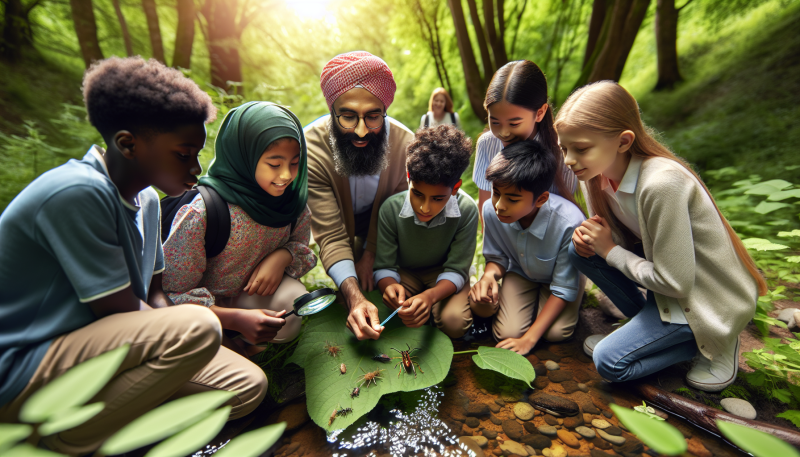Learning can be a blast for kids! It’s not just about books and tests; it’s about discovering new things and exploring the world around them. When kids dive into a topic that excites them, they often forget they’re even learning. It’s about the excitement of a new adventure, whether it’s unraveling the mysteries of dinosaurs or experimenting with colors in art.
One of the best parts of learning is the hands-on experiences. Imagine building a volcano for a science project or planting seeds to watch them grow. These activities make lessons come alive! They allow kids to connect with what they’re studying in a real way. Not only do they remember what they learn, but they also have fun doing it!
It’s also amazing how learning can be social. Group projects, classes, and study buddies turn learning into a shared experience. Kids get to bounce ideas off each other, collaborate on projects, and even make new friends along the way. This not only makes learning fun but helps them develop teamwork skills essential for life.
Plus, with technology and interactive tools, there are countless ways for kids to engage with their studies. From educational games to online quizzes, these resources make it easy to learn at their own pace. Kids can play while they learn, and that’s a fantastic combo! Whether it’s a fun app or an exciting video, tech opens up a whole new world of possibilities.
Engaging Activities to Boost Curiosity
Kids are naturally curious, and tapping into that curiosity can make learning feel like an adventure! Here are some fun activities that will not only engage their minds but also boost their desire to discover more about the world around them.
1. Nature Treasure Hunt: Grab a list of items commonly found in your backyard or a nearby park—like leaves, flowers, or rocks—and turn a simple walk into a treasure hunt. Encourage them to observe colors, shapes, and sizes. It's a great way to connect with nature while sparking questions and discussions about the environment!
2. DIY Science Experiments: Who doesn't love a good experiment? Simple projects like making a baking soda volcano or mixing cornstarch and water to create oobleck can ignite excitement. Not only are these activities hands-on, but they also set the stage for questions like "What happens next?" and "Why did that happen?"
3. Storytime Adventure: Mix up your reading routine by choosing books that encourage interaction. Books with questions, puzzles, or even those that ask kids to guess what happens next can turn a quiet storytime into an engaging discussion. You might be surprised by the creative ideas they come up with!
4. Cooking Together: Get them involved in the kitchen! Cooking is a perfect blend of math, science, and even art. Let them help with measuring ingredients, mixing, and even choosing recipes. As they cook, you can talk about how different ingredients interact and where they come from. Plus, who doesn't love a tasty reward at the end?
Tips for Supporting Your Child’s Learning
Helping your child thrive in their learning journey can be a rewarding experience. Here are some simple tips to make the process enjoyable and effective.
Create a Positive Learning Environment: Kids learn best in a space that feels comfortable and inviting. Set up a specific area in your home that’s free from distractions. Make it cozy with good lighting, some fun supplies, and their favorite books nearby. This can help your child associate that space with learning and creativity.
Encourage Curiosity: Kids are naturally curious, so tap into that! Whenever your child asks questions, be excited to explore the answers together. Use books, videos, or even fun experiments to dive deeper into their interests. Show them that learning doesn’t have to be serious; it can be an adventure!
Set Small Goals: Big tasks can be overwhelming. Break learning activities into smaller, manageable goals. Celebrate these little victories together. This way, your child feels a sense of accomplishment, making them more eager to take on the next challenge.
Stay Involved and Supportive: Show your child that you care about their learning by being present. Ask them about what they learned each day and participate in activities that interest them. Your support can boost their confidence and make them feel valued in their educational journey.
Creating a Positive Learning Environment
Remember, the goal is to inspire a love for learning. By making sure kids feel supported and excited, you’re setting them up for a lifelong journey of discovery and growth. Letting them know it’s okay to make mistakes along the way helps them develop resilience and a positive attitude towards challenges.



